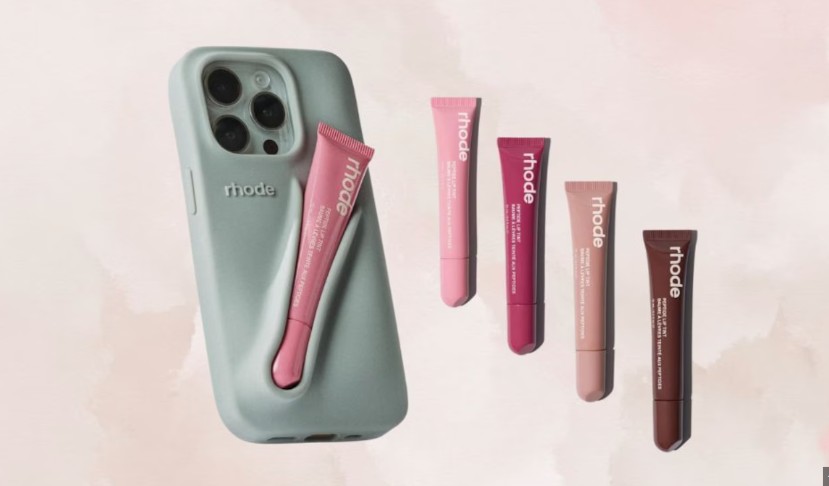The Genius Behind “Rhode” Success—And How You Can Use the Same Strategy in Your Business
Key Points
- Solve Real Problems – The best products don’t just sell; they remove everyday frustrations and make life easier for customers.
- Integrate Smart Solutions – Add simple but effective tools to your product that help users apply what they learn effortlessly.
- Listen to Your Audience – Deep audience insights lead to innovations that feel natural, useful, and instantly valuable.
Hailey Bieber is the face of the brand. She’s on billboards, in campaigns, and all over social media, making Rhode one of the most talked-about beauty brands in the industry.
But let’s be real—she’s not the one sitting at a desk all day, brainstorming marketing campaigns or figuring out how to make lip balm go viral.
That work happens behind the scenes, and one of the key people responsible for Rhode’s massive success is Lauren Ratner.
Lauren is the brand development mastermind, ensuring that Rhode isn’t just another beauty brand but a leader in the industry.
And do you know what helped Rhode stand out? A deep understanding of its customers.
How Rhode Used Product-Problem Fit to Create a Winning Product
When Lauren and her team dug deep into what Rhode customers actually needed, they found a common issue:
Our customers never leave home without their lip balm, but sometimes digging it out of their bag is a hassle—or worse, they forget it at home.
If you’re someone who constantly reaches for lip balm, you get it. It’s that little thing you always want within reach, but somehow, it disappears into the black hole of your bag or gets left on your nightstand when you rush out the door.
So, what did Rhode do?
They identified this everyday struggle and solved it by creating the Leap Case—a sleek, convenient way to keep your lip balm attached to your bag or keychain, so you never have to dig around for it again.
This is what we call Product-Problem Fit—when a product is built to seamlessly solve a real problem that customers face every day.
And this isn’t just a cool marketing idea. It’s a strategy that can be used in any business, including info-businesses and digital products.
So, let’s break it down.
How to Use Product-Problem Fit in Your Digital Products
When we think about Product-Problem Fit, we often think of physical products. But what about digital products? Courses, coaching programs, ebooks—these also need to solve a real problem for your audience.
Let’s take a real-life example.
The Problem: Digital Chaos in Online Learning
When I was launching my multichannel strategy course, I wanted to make sure it was truly valuable. So, before finalizing the content, I did what every smart entrepreneur should do—I talked to my past students.
I asked them:
What’s the biggest struggle you face when taking online courses?
Their answers were eye-opening.
“There’s so much information, and I don’t know where to start.”
“I take notes everywhere—Google Docs, Notion, sticky notes—but then I can’t find anything when I need it.”
“I get overwhelmed trying to organize everything.”
In short? Their biggest problem wasn’t the course itself—it was what happened AFTER the course. They ended up with a pile of notes and ideas but no clear way to put them into action.
Sound familiar?
Many online courses focus on delivering information, but they forget to help students apply that information in a structured way.
So, I had an idea.
The Solution: A Notion-Based Productivity System
Instead of just giving students another course full of slides and PDFs, I decided to fix the real-life issue they were facing.
I added a bonus gift to my course: a Notion-based productivity system designed specifically for organizing course materials, content plans, and personal tasks.
Why Notion?
Because my students were already using it. They just didn’t have a system in place.
What’s Inside the System?
✅ Content Plan Templates for each social media platform—no more guessing what to post.
✅ Multichannel Posting Calendar—schedule a post, and it automatically updates in the calendar.
✅ Task Tracker—so students stay on top of their marketing efforts.
✅ Notepad—for quick ideas, without losing them in a sea of notes.
✅ Separate Pages for Different Life Areas—because business isn’t the only thing in life.
✅ Material Library—a place to store and organize files from all the courses they’ve taken.
Instead of students spending hours searching for notes, they could now focus on implementing what they learned.
And guess what?
Students LOVED it.
They felt like the course wasn’t just about giving them knowledge—it was about helping them apply it with ease.
That’s Product-Problem Fit in action.
How to Apply This Strategy in Your Own Business
Now that you see how Rhode and I both used Product-Problem Fit, let’s talk about how you can use it too.
Step 1: Identify a Real Problem
Ask yourself (or better yet, ask your audience):
What’s the most frustrating part of their daily routine?
What small inconvenience do they deal with regularly?
What stops them from fully benefiting from your product or service?
Example: If you’re selling a productivity course, your customers’ real problem might not be that they don’t understand productivity—it’s that they struggle to stick with new habits.
Step 2: Find a Simple Yet Effective Solution
Your solution doesn’t have to be a big, expensive, or complex thing. It just has to remove friction from your customer’s life.
Example: If your customers struggle with productivity, give them a simple daily planner template inside your course so they can immediately start implementing what they’ve learned.
Step 3: Integrate the Solution Into Your Product
Don’t just offer the solution as a side product—make it part of the experience.
Rhode didn’t just sell lip balm. They built a better way to carry it.
I didn’t just sell a course. I gave my students a system to stay organized.
Why This Strategy Works So Well
When you solve a real problem that people actually face, your product instantly becomes:
✔️ More Valuable – Because it actually makes life easier.
✔️ More Shareable – People love telling others about things that solve their problems.
✔️ More Profitable – Because customers are willing to pay for things that make life simpler.
And the best part? You don’t need a massive budget to apply this. You just need to listen to your audience and create something they actually need.
Product Problem Fit: Make Your Business Stand Out
At the end of the day, successful brands aren’t just selling products—they’re solving problems.
Rhode did it with a simple yet brilliant solution.
I did it by helping students organize their learning.
And you can do it too.
The next time you’re creating a digital product, don’t just think about what you’re selling—think about what problem you’re solving.
That’s how you build a brand people love.
And who knows? Your next small idea might just turn into a game-changing strategy.























